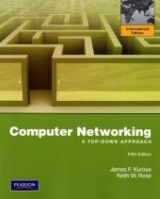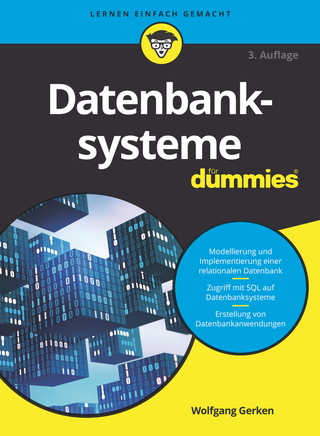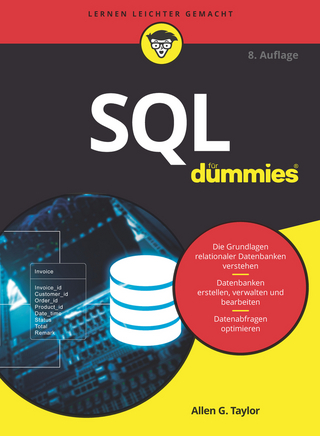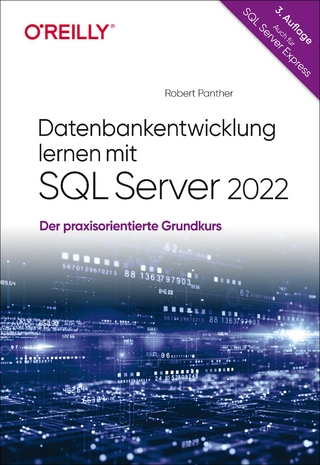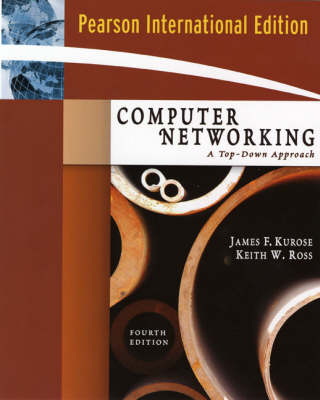
Computer Networking
Pearson (Verlag)
978-0-321-51325-0 (ISBN)
- Titel erscheint in neuer Auflage
- Artikel merken
Networking today involves much more than standards specifying message formats and protocol behaviors–and it is far more interesting. Professors Kurose and Ross focus on describing emerging principles in a lively and engaging manner and then illustrate these principles with examples drawn from Internet architecture.
James Kurose teaches at the University of Massachusetts at Amherst. His research interests include network protocols and architecture, network measurement, sensor networks, multimedia communication, and modeling and performance evaluation. He received his PhD from Columbia University. Keith Ross is a professor of computer science at Polytechnic University. He has worked in peer-to-peer networking, Internet measurement, video streaming, Web caching, multi-service loss networks, content distribution networks, voice over IP, optimization, queuing theory, optimal control of queues, and Markov decision processes. Professor Ross received his PhD in Computer and Control Engineering from the University of Michigan.
Chapter 1 Computer Networks and the Internet
1.1 What Is the Internet?
1.2 The Network Edge
1.3 The Network Core
1.4 Delay, Loss, and Throughput in Packet-Switched Networks
1.5 Protocol Layers and Their Service Models
1.6 Networks Under Attack
1.7 History of Computer Networking and the Internet
1.8 Summary
Chapter 2 Application Layer
2.1 Principles of Network Applications
2.2 The Web and HTTP
2.3 File Transfer: FTP
2.4 Electronic Mail in the Internet
2.5 DNS—The Internet’s Directory Service
2.6 Peer-to-Peer Applications
2.7 Socket Programming with TCP
2.8 Socket Programming with UDP
2.9 Summary
Chapter 3 Transport Layer
3.1 Introduction and Transport-Layer Services
3.2 Multiplexing and Demultiplexing
3.3 Connectionless Transport: UDP
3.4 Principles of Reliable Data Transfer
3.5 Connection-Oriented Transport: TCP
3.6 Principles of Congestion Control
3.7 TCP Congestion Control
3.8 Summary
Chapter 4 The Network Layer
4.1 Introduction
4.2 Virtual Circuit and Datagram Networks
4.3 What’s Inside a Router?
4.4 The Internet Protocol (IP): Forwarding and Addressing in the Internet
4.5 Routing Algorithms
4.6 Routing in the Internet
4.7 Broadcast and Multicast Routing
4.8 Summary
Chapter 5 The Link Layer and Local Area Networks
5.1 Link Layer: Introduction and Services
5.2 Error-Detection and -Correction Techniques
5.3 Multiple Access Protocols
5.4 Link-Layer Addressing
5.5 Ethernet
5.6 Link-Layer Switches
5.7 PPP: The Point-to-Point Protocol
5.8 Link Virtualization: A Network as a Link Layer
5.9 Summary
Chapter 6 Wireless and Mobile Networks
6.1 Introduction
6.2 Wireless Links and Network Characteristics
6.3 WiFi: 802.11 Wireless LANs
6.4 Cellular Internet Access
6.5 Mobility Management: Principles
6.6 Mobile IP
6.7 Managing Mobility in Cellular Networks
6.8 Wireless and Mobility: Impact on Higher-layer Protocols
6.9 Summary
Chapter 7 Multimedia Networking
7.1 Multimedia Networking Applications
7.2 Streaming Stored Audio and Video
7.3 Making the Best of the Best-Effort Service
7.4 Protocols for Real-Time Interactive Applications
7.5 Providing Multiple Classes of Service
7.6 Providing Quality of Service Guarantees
7.7 Summary
Chapter 8 Security in Computer Networks
8.1 What Is Network Security?
8.2 Principles of Cryptography
8.3 Message Integrity
8.4 End-Point Authentication
8.5 Securing E-mail
8.6 Securing TCP Connections: SSL
8.7 Network-Layer Security: IPsec
8.8 Securing Wireless LANs
8.9 Operational Security: Firewalls and Intrusion Detection Systems
8.10 Summary
Chapter 9 Network Management
9.1 What Is Network Management?
9.2 The Infrastructure for Network Management
9.3 The Internet-Standard Management Framework
9.4 ASN.1
9.5 Conclusion
References
Index
| Erscheint lt. Verlag | 20.3.2008 |
|---|---|
| Sprache | englisch |
| Maße | 188 x 229 mm |
| Gewicht | 1258 g |
| Themenwelt | Mathematik / Informatik ► Informatik ► Datenbanken |
| ISBN-10 | 0-321-51325-8 / 0321513258 |
| ISBN-13 | 978-0-321-51325-0 / 9780321513250 |
| Zustand | Neuware |
| Haben Sie eine Frage zum Produkt? |
aus dem Bereich
